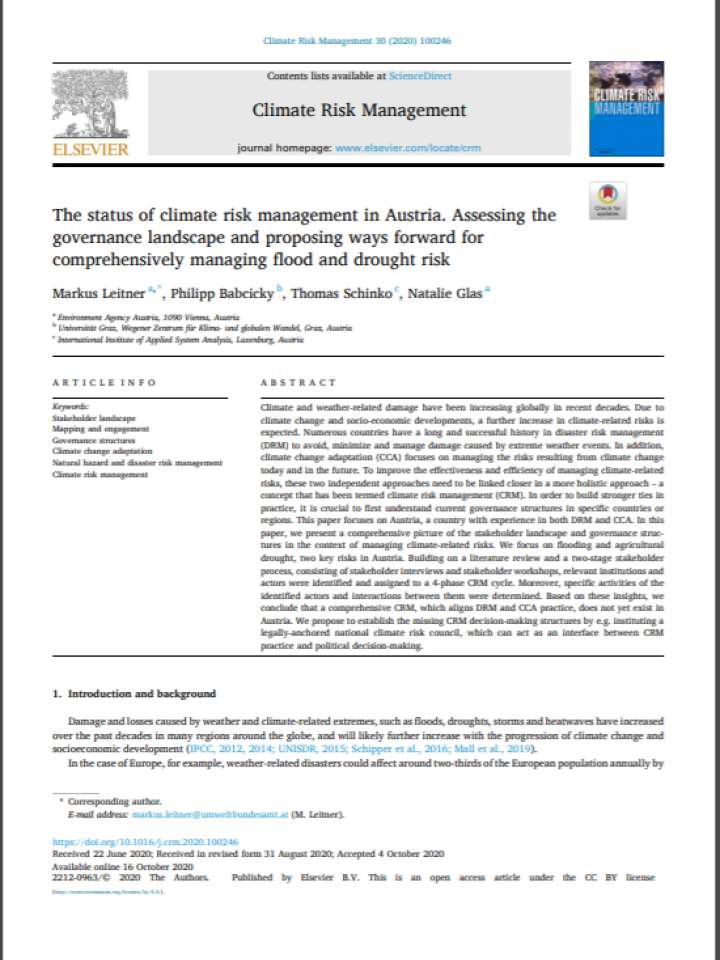The status of climate risk management in Austria. Assessing the governance landscape and proposing ways forward for comprehensively managing flood and drought risk
Climate and weather-related damage have been increasing globally in recent decades. Due to climate change and socio-economic developments, a further increase in climate-related risks is expected. Numerous countries have a long and successful history in disaster risk management (DRM) to avoid, minimize and manage damage caused by extreme weather events. In addition, climate change adaptation (CCA) focuses on managing the risks resulting from climate change today and in the future. To improve the effectiveness and efficiency of managing climate-related risks, these two independent approaches need to be linked closer in a more holistic approach – a concept that has been termed climate risk management (CRM). In order to build stronger ties in practice, it is crucial to first understand current governance structures in specific countries or regions. This paper focuses on Austria, a country with experience in both DRM and CCA. In this paper, we present a comprehensive picture of the stakeholder landscape and governance structures in the context of managing climate-related risks. We focus on flooding and agricultural drought, two key risks in Austria. Building on a literature review and a two-stage stakeholder process, consisting of stakeholder interviews and stakeholder workshops, relevant institutions and actors were identified and assigned to a 4-phase CRM cycle. Moreover, specific activities of the identified actors and interactions between them were determined. Based on these insights, we conclude that a comprehensive CRM, which aligns DRM and CCA practice, does not yet exist in Austria. We propose to establish the missing CRM decision-making structures by e.g. instituting a legally-anchored national climate risk council, which can act as an interface between CRM practice and political decision-making.
Explore further
